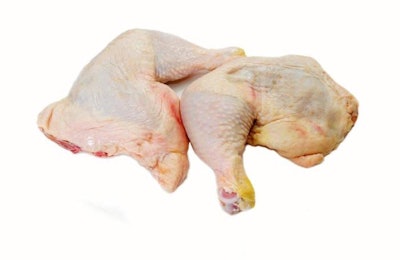
Production of antibiotic-free chicken in the U.S. will have little effect on demand, but may allow for some chicken parts to be exported at a higher price, according to Paul Aho, poultry industry economist and consultant.
Commenting at the 2017 International Production & Processing Expo (IPPE) in Atlanta this week, Aho said: “I don’t think there will be any negative effect on exports, whether we use or don’t use antibiotics.”
Aho said the U.S. mainly exports chicken leg quarters. “We could potentially sell some leg quarters at a higher price if they’re antibiotic free.”
“We’ll continue to be able to sell large quantities of leg quarters around the world,” Aho said.
Of the total number of chickens produced in the U.S., at least 15 percent are produced antibiotic free and 40 percent with a restricted use. Antibiotic-free (ABF) production may include these compounds if birds become sick, but chickens must be marketed differently.
From an ethical and animal welfare point of view, if chickens get sick, there is an obligation to administer antibiotics. Most antibiotics used in animal production are not used in human medicine, nor are human antibiotics used to promote growth.
Comprehensive resource for antibiotic-free poultry production available
A new collection of exclusive articles, blogs, infographics and videos on antibiotic-free poultry production, by trusted WATT Global Media editors and industry experts, equip poultry producers and marketers with information to help them make critical business decisions. Purchase your copy.
















